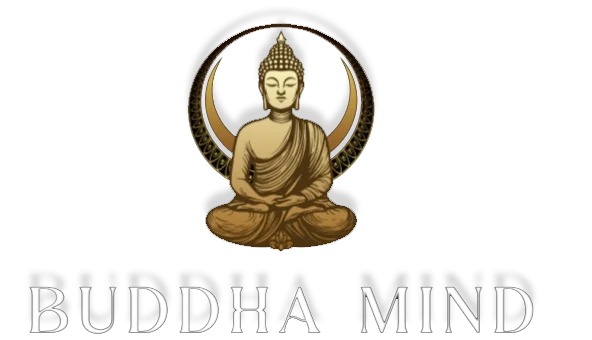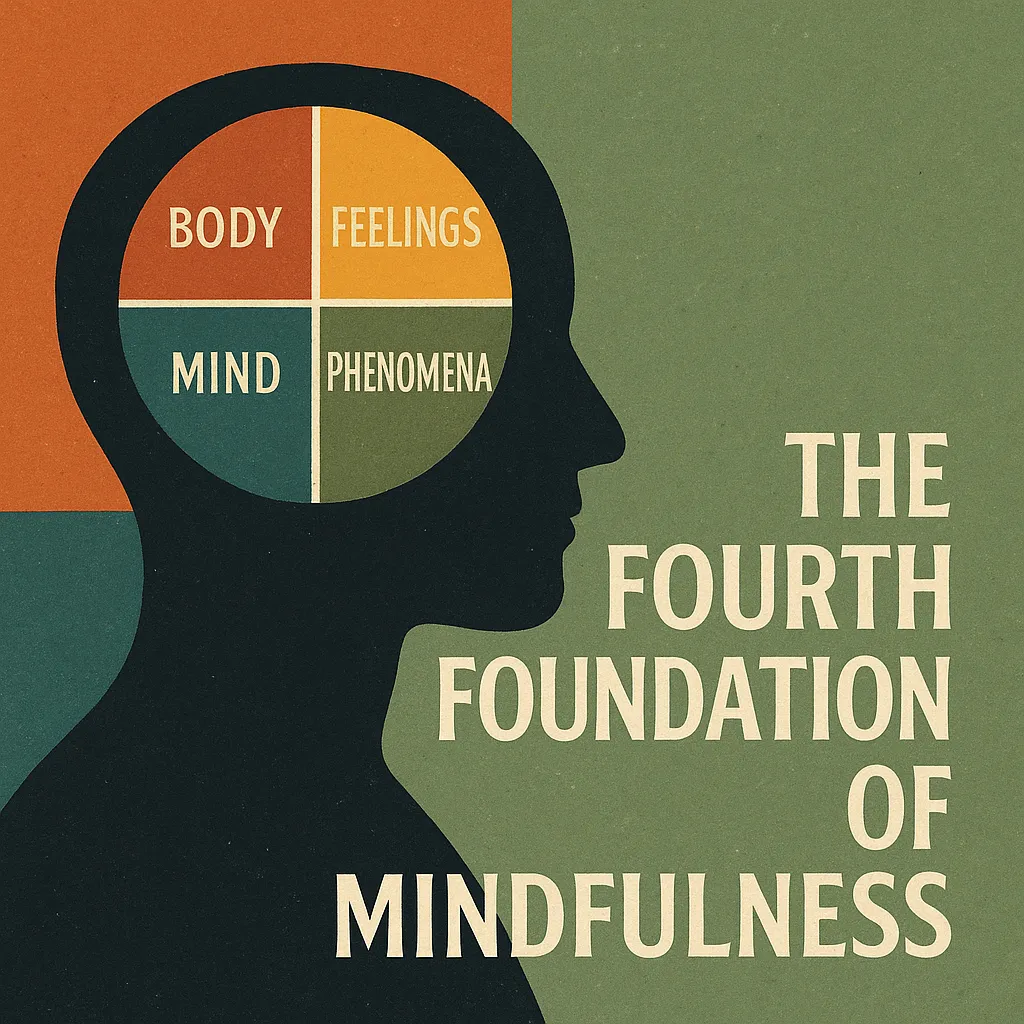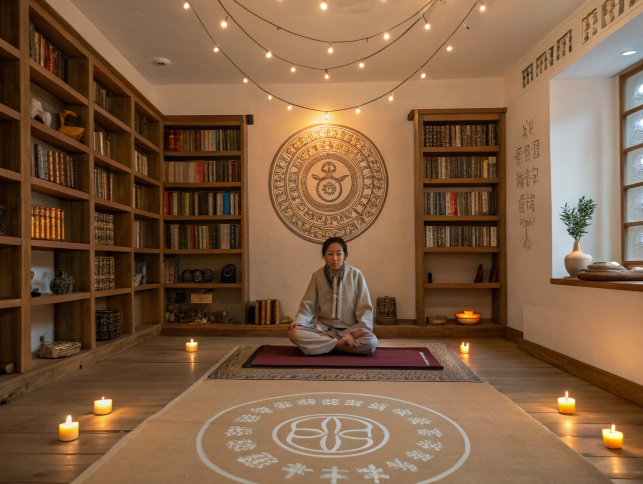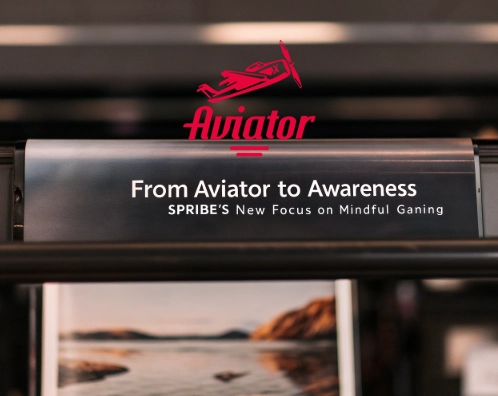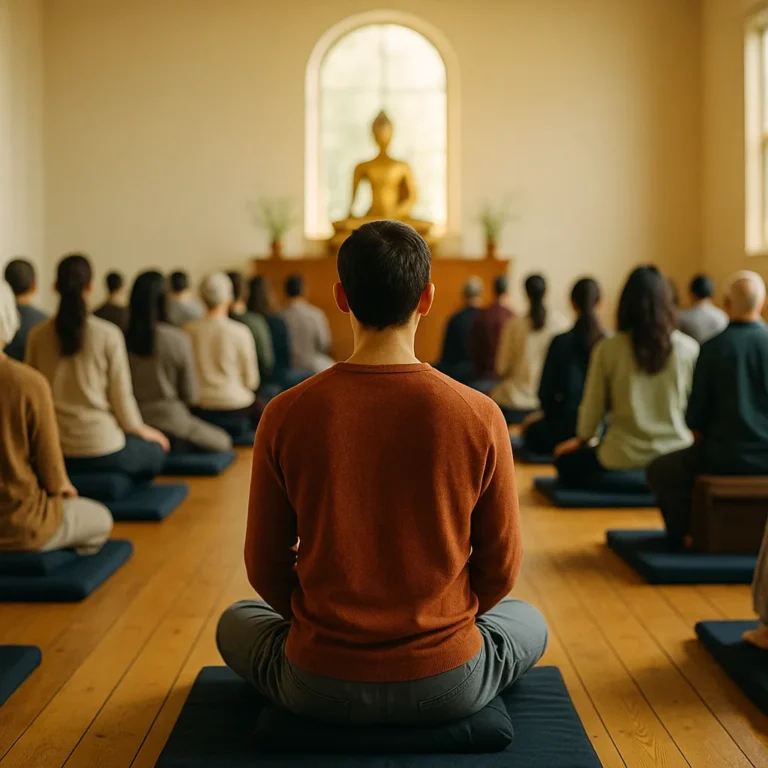The Fourth Foundation of Mindfulness: Unveiling the Subtle Structure of Insight
If you’ve ever asked yourself, “what is the fourth foundation?”, you’re already touching the edge of one of the most powerful teachings in early Buddhist practice. The Four Foundations of Mindfulness aren’t just tools to calm the mind — they’re a full roadmap from confusion to clarity, distraction to presence, suffering to freedom.
And while each of the four is essential, the fourth foundation holds something special. It’s often overlooked, even by regular meditators, because it asks for subtlety. It asks you not just to watch the breath or observe thoughts — but to see through reality itself.
Let’s break it all down — clearly, practically, and with enough detail to bring it to life in your daily practice.
What Are the Four Foundations of Mindfulness?
In the Satipaṭṭhāna Sutta, the Buddha describes four areas of experience where mindful awareness should be cultivated. These aren’t random categories — they move progressively from physical sensation to the deepest inner patterns that shape how we suffer or awaken.
Here they are:
- Kāya – The Body
Awareness of breathing, posture, movement, and physical sensations. - Vedanā – Feeling Tone
Noticing whether each moment feels pleasant, unpleasant, or neutral. - Citta – The Mind
Observing mental states — like clarity, agitation, desire, or calm. - Dhammā – Mental Objects / Phenomena
Investigating deeper mental patterns, teachings, and structures of experience.
The four foundations of mindfulness work together. They start with what’s obvious and lead us toward what’s hidden — until even the illusion of a permanent “self” begins to unravel.
Why These Foundations Matter
The Buddha didn’t describe mindfulness as optional. He called it the direct path to liberation. Why? Because each foundation trains the mind to relate to reality differently:
- The body grounds us in the now.
- Feeling tones reveal how we grasp or resist.
- Mind states show how filters shape perception.
- And the fourth foundation shows how we build — and can dismantle — suffering itself.
These aren’t stages you outgrow. They’re lenses that reveal truth when applied again and again.
What Is the Fourth Foundation?
This is where the curiosity peaks — what is the fourth foundation, really?
The fourth foundation is dhammānupassanā, often translated as “contemplation of dhammas” or mental objects. But that doesn’t quite do it justice. This isn’t just watching thoughts float by. It’s about systematically investigating the teachings and phenomena that form our reality.
What does that look like in practice? It includes five key contemplations:
1. The Five Hindrances
- Sensual desire
- Ill will
- Sloth and torpor
- Restlessness and worry
- Doubt
Instead of judging these when they arise, the practitioner observes them as passing conditions. This changes everything — it depersonalizes struggle.
2. The Five Aggregates (Khandhas)
- Form
- Feeling
- Perception
- Mental formations
- Consciousness
These combine to create what we call “me.” Seeing their impermanence unravels attachment to identity.
3. The Six Sense Bases
- Eye, ear, nose, tongue, body, mind — and their objects.
By noticing how contact between sense and object leads to reaction, we begin to insert space — choice — between stimulus and response.
4. The Seven Factors of Awakening
- Mindfulness
- Investigation
- Energy
- Joy
- Tranquility
- Concentration
- Equanimity
These aren’t just concepts. They’re inner qualities to cultivate — and notice — as signs that the path is unfolding naturally.
5. The Four Noble Truths
- Suffering
- Its cause
- Its cessation
- The path leading there
This is the heart of the Buddha’s teaching — and the fourth foundation makes it an experiential truth, not just a philosophy.
How to Practice the Fourth Foundation in Real Life
You don’t need a monastery or a 10-day retreat to start. Here’s how you can begin exploring the fourth foundation right where you are.
1. Spot the Hindrances
In meditation, pause and ask:
- “Is the mind sleepy?”
- “Is desire running the show?”
- “Am I doubting the practice?”
Name what’s present, kindly. Awareness is already the beginning of release.
2. Break Apart Identity
When a strong emotion arises, investigate it:
- Is this a feeling? A perception? A reaction?
- What happens if I don’t call it “me”?
This practice isn’t about detachment from life. It’s about detachment from illusion.
3. Watch the Senses React
Next time you feel triggered by a sound, smell, or sight, ask:
- What was the sense contact?
- What feeling tone followed?
This helps you track how habits are formed — and where freedom lives.
4. Nurture Awakening Factors
When you feel calm, look closer:
- Is there joy? Is there energy?
- What happens when mindfulness deepens?
You don’t force these qualities. You recognize and nourish them.
5. Apply the Four Noble Truths to Daily Life
Ask yourself throughout the day:
- Where’s suffering right now?
- What craving is creating it?
- What happens if I don’t feed it?
This brings wisdom out of the texts and into your lived experience.
Common Myths About the Fourth Foundation
Because of its complexity, the fourth foundation is often misunderstood. Some of the most common myths include:
- “It’s just about watching thoughts.”
No — it’s about observing conditioned mental patterns and insights. - “It’s only for advanced meditators.”
Not true — even beginners can start by noticing hindrances. - “It’s too intellectual.”
It’s not thinking about teachings. It’s observing them arise directly in the mind and body.
The fourth foundation isn’t about theories. It’s about seeing what’s really going on.
How the Four Foundations Work Together
Though we’ve focused on the fourth foundation, it’s never isolated. The power of the Four Foundations of Mindfulness is in how they interconnect.
For example:
- You notice tension in your jaw (body).
- It feels unpleasant (feeling tone).
- There’s irritation (mind state).
- You realize it’s a hindrance (mental object).
This is how the whole structure unfolds in real time. Going back to the breath when the mind is wild isn’t regression — it’s wise sequencing.
Why It All Matters
Understanding the four foundations of mindfulness is not about memorizing a list. It’s about developing a lens to see life as it is — without extra layers of story, resistance, or illusion.
And if you’ve ever paused during meditation and wondered, “what is the fourth foundation?” — now you know. It’s the deepest layer. The pattern behind the pattern. It’s how we move from reacting to observing, from clinging to understanding.
Insight doesn’t come from perfect practice. It comes from honest, continuous attention.
